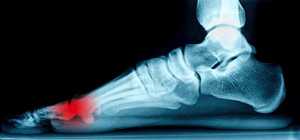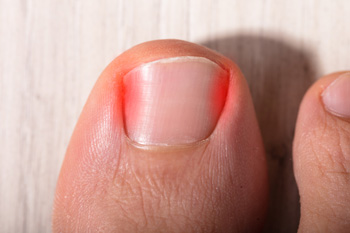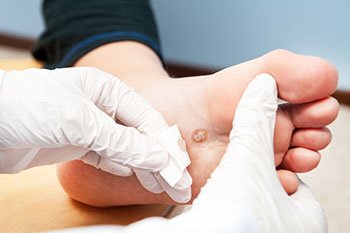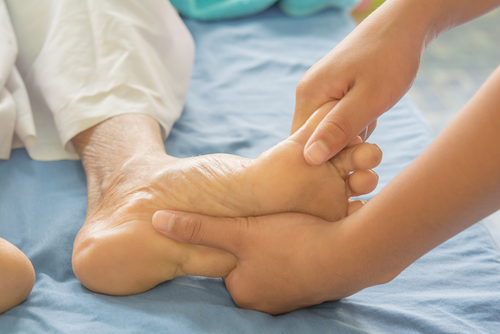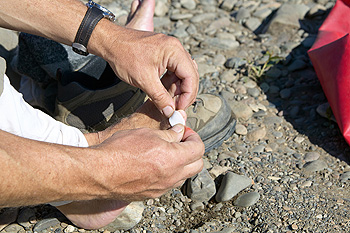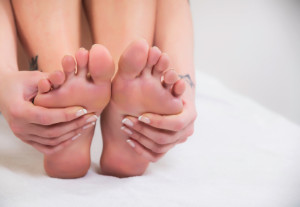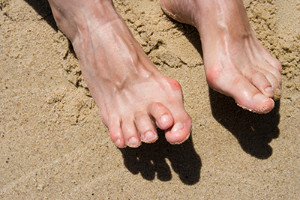 The foot condition that is known as hammertoe is often noticeable, and easily diagnosed. It typically affects the middle joints of the second or third toe, causing the joint to bend upward and the toes to bend downward. This condition often develops gradually due to genetic factors and from wearing shoes that do not have adequate room for the toes to move freely in. It is helpful to wear a larger size shoe that can accommodate the hammertoe, and mild relief may be found when a protective pad is worn over the affected joint. Corns may form on the top of the joint from friction that can come from the shoes that are worn. If you have hammertoe, it is strongly suggested that you are under the care of a podiatrist who can properly diagnose and treat this condition.
The foot condition that is known as hammertoe is often noticeable, and easily diagnosed. It typically affects the middle joints of the second or third toe, causing the joint to bend upward and the toes to bend downward. This condition often develops gradually due to genetic factors and from wearing shoes that do not have adequate room for the toes to move freely in. It is helpful to wear a larger size shoe that can accommodate the hammertoe, and mild relief may be found when a protective pad is worn over the affected joint. Corns may form on the top of the joint from friction that can come from the shoes that are worn. If you have hammertoe, it is strongly suggested that you are under the care of a podiatrist who can properly diagnose and treat this condition.
Hammertoe
Hammertoes can be a painful condition to live with. For more information, contact Cary Golub, DPM from New York. Our doctor will answer any of your foot- and ankle-related questions.
Hammertoe is a foot deformity that affects the joints of the second, third, fourth, or fifth toes of your feet. It is a painful foot condition in which these toes curl and arch up, which can often lead to pain when wearing footwear.
Symptoms
- Pain in the affected toes
- Development of corns or calluses due to friction
- Inflammation
- Redness
- Contracture of the toes
Causes
Genetics – People who are genetically predisposed to hammertoe are often more susceptible
Arthritis – Because arthritis affects the joints in your toes, further deformities stemming from arthritis can occur
Trauma – Direct trauma to the toes could potentially lead to hammertoe
Ill-fitting shoes – Undue pressure on the front of the toes from ill-fitting shoes can potentially lead to the development of hammertoe
Treatment
Orthotics – Custom made inserts can be used to help relieve pressure placed on the toes and therefore relieve some of the pain associated with it
Medications – Oral medications such as anti-inflammatories or NSAIDs could be used to treat the pain and inflammation hammertoes causes. Injections of corticosteroids are also sometimes used
Surgery – In more severe cases where the hammertoes have become more rigid, foot surgery is a potential option
If you have any questions please contact our offices located in Williston Park, and Long Beach, NY . We offer the newest diagnostic and treatment technologies for all your foot and ankle needs.
